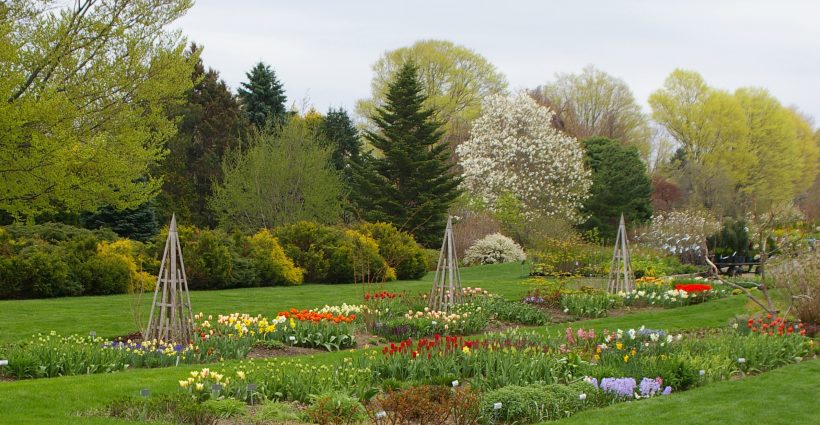designed for the way women work.

Ten Ways To Plan for Next Spring!
Category: Plant Ideas & Info, Presenting "The Curious Gardener"

Order Spring Bulbs–
Bulb catalogs arriving in our mailboxes in September are the equivalent of seed catalogs arriving in January. They are fun to look at, fun to dream about, and a great tool for planning ahead. I buy from Brent and Becky’s, which is a third- and fourth-generation flower-bulb company in Virginia. I’ve always been happy with my purchases, and their customer service is excellent. Also, I’ve had the pleasure of meeting Becky and Brent and can vouch for their professionalism and dedication to providing high quality bulbs. Another good source for bulbs is White Flower Farm in Morris, CT.
Plant Trees, Shrubs, and Perennials–
Now is an excellent time to plant trees and shrubs. It gives them a head start for spring, and sometimes you can find great sales at this time of year. Unlike planting in the summer, they are not as likely to suffer the stresses of heat and dry conditions. With herbaceous perennials, plant before the middle of October so they have a chance to establish roots before freezing weather sets in. If you wait too long, you will put them at risk of heaving out of the soil during repeated freezes and thaws during the winter. Wear your Womanswork garden gloves whenever digging and dividing plants!
Divide Irises–
Late summer and early fall are the best time to divide and replant your irises. You want to give them a couple of months to take root before freezing weather, so don’t wait. Get a sharp knife to cut through the rhizomes when dividing them. Replant with the top of the rhizome level with or just below the surface of the ground to prevent rotting.
Bring in Frost-Sensitive Container Plants–
Sometimes the first few frosts only last a couple of hours in the early morning, but that’s all it takes to kill off the most tender plants. Keep track of when the first frost is expected and bring in any container plants that are sensitive. According to the Old Farmer’s Almanac, the average first frost date in our area is October 5, but it could come a little sooner or later. Some examples of frost sensitive container plants are clivia miniata and coleus.
Transplant Peonies–
Now is the time to transplant established peonies if you are redesigning a garden bed or have found your peonies are getting crowded and not getting the sun they need where they are. Try not to disturb the roots when you dig, then plant them at the same level in the ground that they were planted before you moved them.
Make Pesto–
If you have basil growing, remember that it is very sensitive to frost. Keep track of when the first frost is coming and cut your basil for pesto. I like to chop up my basil, add olive oil, a little garlic and grated cheese, and store in sealed plastic bags in the freezer. Flatten the bag, removing all air. When you want to use it, just break off a piece and put the bag back in the freezer.
Buy Containers on Sale–
Look for sales on containers. If you have the right conditions inside your house, you can use them to pot up some houseplants or overwinter garden plants that must be brought indoors, such as rosemary and agapanthus. When spring comes you can look forward to designing a new container arrangement!
Create a New Garden Bed–
If you are thinking about adding a vegetable garden or a new flowerbed next year, start the process now. Lay newspaper down on the area where you want to kill existing grass and put wood chips or mulch on top of the newspaper to weigh it down and eventually add nutrients to the soil. In the spring you will likely have a garden bed you can plant while avoiding the hard job of digging out the grass first.
Buy Covers for Outdoor Furniture–
There are so many options now for outdoor furniture covers, with different sizes and colors available. If you don’t want to lug your furniture to a basement or barn, consider covering it. We usually move ours to a spot just out of view and cover with nice fitted covers.
Take in Bird Feeders–
If you have seen bears near your house bring in bird feeders. Better yet, think about planting more bird-friendly shrubs to attract birds without putting out commercial birdseed at all. Bears are attracted to bird seed – remember their sense of smell is far greater than a human’s! Some bears remain active even during the winter, when they are supposed to be sleeping, if there is food available. For more information about black bears in New England, click here to read our blog post on the Womanswork website.



